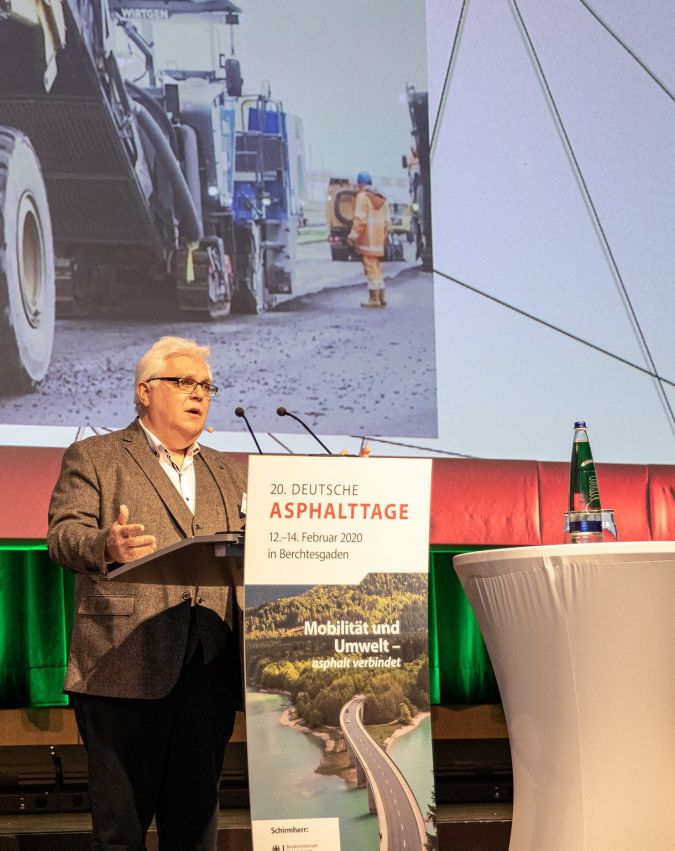The Surveyor’s Need to Embrace Data Management
Interview with Ulrich Hermanski, Topcon Positioning Group
Read this interview with Topcon's Ulrich Hermanski for his views on the current status of the surveying profession, the key advances and the future role of surveyors.
Since graduating in Geomatics Engineering from Germany’s University of Essen in the 1980s, Ulrich Hermanski – chief marketing officer and executive vice president of geopositioning at Topcon – has seen the surveying profession change dramatically. In this interview with GIM International, he sums up the current status of the surveying profession. He reflects on the key advances in the ever-evolving geospatial business, emphasizes the vital role of geodata and discusses the role of surveyors – and of Topcon – in the future.
You graduated in Geomatics Engineering in 1985. How has the profession changed since then?
There have been a lot of changes since then, but the biggest in terms of geomatics is of course the impact of digital technology. This change hasn’t just impacted the way professionals take measurements and analyse findings; it has actually completely transformed the role of a geomatics engineer. Today, geomatics professionals are far more focused on data handling than in the past – or at least they should be. With masses of data now available on every job site, it’s vital that surveyors are able to translate this data into meaningful information for project teams. Back when I was studying, it was more important to focus on taking accurate measurements and avoiding human errors on site, rather than considering how the information would be digested by other stakeholders on the project. And in 1985, there was far less data available – not to mention there being no laptops, smartphones or tablets. Any computerized calculation was performed by a machine that took up half a room! So when you look at what technology is at a geomatics engineer’s fingertips now versus back then, you can’t even compare the two situations.
The role of the surveyor is still evolving rapidly, calling for a different set of skills. What are the biggest factors in this shift? And what can surveying professionals do to keep up?
The most important skill for surveyors to embrace is data management and verification. It’s no longer just the quantity of data collected that is important to a project, but also the quality and how it is presented and communicated. In fact, we’re already seeing job titles change within the industry; what once was a surveying engineer is now a spatial data manager or geodata manager. The speed of data verification has also increased exponentially in line with project teams’ expectations. Gone are the days of a two-week verification window. Surveyors now are expected to perform verification in real-time, on site.
Although surveying has always depended on data, the level of interpretation and management of this data has evolved massively, as surveyors are now learning to leverage gigantic datasets, with cloud-based and software-as-a-service (SaaS) solutions helping to accelerate the process. As data capture solutions have improved, it’s no longer permissible for surveyors to rely on old approaches to data management, and it’s crucial they embrace these technologies in order to deliver value on a project. This is why it’s vital to make understanding data their main focus for the future – it will be all about working with the technology, not competing with it.
Do you believe our industry will be able to attract enough qualified personnel in the years ahead?
The issue around attracting skilled and qualified personnel again comes down to the changing nature of the job roles in our industry. The element of actually capturing data is becoming the smallest part of a surveyor’s role; it’s now all about bringing data into the construction workflow and helping to digitalize the entire process. This opens up possibilities for our industry to attract more tech-focused and IT-oriented people, and if we are able to make the roles attractive to those candidates, it will also help to accelerate a much-needed shift in our sector. One of the best ways we can encourage these individuals to apply is by targeting different universities and courses that are not related to traditional surveying, and showing them the opportunities that exist in geomatics. To put this into perspective, when I was at university in 1985, there were 200 students in my year of study. Now, there are cases of three universities having to join forces to get just 30 people enrolled. The race is on to attract new blood, as we need to ensure we’re all doing everything we can to avoid a skills gap.

There is a huge buzz around artificial intelligence (AI) including deep learning and machine learning. Will AI deliver on its promise? And how is Topcon anticipating the future impact of these technologies?
AI is not really affecting our traditional geomatics and surveying business, but it is having a huge impact on our positioning and machine control offerings. AI brings some really exciting opportunities for our product range, from creating 3D models to full-blown automation of machinery. When it comes to advancing AI across construction and positioning, the capability for the machinery to collect data is key. Therefore, one huge benefit of AI implementation comes from a mixture of intelligent software and high-level referring sensors on the physical machines. At the moment, we’re working on the next generation of sensors for our machine control systems. This will increase the speed with which information is sent to control boxes by more than 100x per second, meaning the machine is becoming smarter and more efficient with every movement.
Geospatial technology is increasingly intertwined with daily life. Which industries or organizations are currently missing out and could benefit from adopting it faster or more extensively?
I’d have to say that, globally, construction is still the least digitalized and automated industry. Construction is very traditional and historically sceptical of new technology. However, in order to stay ahead of the game, businesses and leaders in the sector need to adapt and transform their ways of working and introduce more advanced workflows. Although initial technology adoption may seem costly, the return on investment (ROI) and efficiencies gained further down the line will massively outweigh the investment costs.
When you compare construction to other traditional sectors like manufacturing, the disparity between technology adoption is stark. This sector has embraced digitalization and automation more readily, contributing to connected workflows, efficient data management and even machine learning. It’s vital that construction catches up and adapts to these new ways of working if we’re to meet the infrastructure demands facing us.
What are the main growth drivers for Topcon?
Our business is focusing on two main areas: automation of construction and automation of agriculture. Although these are more traditional industries, there is plenty of opportunity for advanced technology adoption, and certain areas are really spearheading the change. Automated machine control is huge in both construction and agriculture, with farmers also looking at the automation of feeding and crop growth processes. Permanent adoption of technology is also much easier when it comes to farming, as the location does not change year on year. With construction, however, the automation challenge is bigger as no two sites, projects or project teams are the same. Our growing global population will continue to fuel these sectors, as we all need infrastructure and food – but we simply won’t be able to service the world and bolster both local and international economies if we don’t embrace technology… and fast.
Which notable developments can we expect to see from your company in the short to medium term?
We’re currently working on more workflow-driven solutions. We’ve realized that, especially in sectors like construction, easy-to-use interfaces are the way forward and make our customers’ lives much easier. For on-site teams, it’s really helpful to have technology that is as simple and intuitive to use as an iPhone. Over the next six months, we’re also focusing on applying our technology to ‘mini-machines’. These are smaller machines, usually utilized within smaller-scale businesses that require automation and innovative technology just as much as larger developers. Coupling this equipment with easy-to-use interfaces will enable contractors, landscaping professionals and smaller-scale developers – the sorts of companies not used to having engineers on board – to use our solutions. We’re also looking at the portable possibilities of these mini-machines. On big machines, GPS, antenna and prisms are normally fixed on the machine. With this smaller equipment, however, we have the opportunity to extract the solution and put it on a pole. This means a contractor can take a measurement easily, then put it back on the machine. It’s all about making things simpler for the end user.
Is there anything else you would like to share with the geospatial community?
One thing I would like to reinforce is that it’s vital that geoprofessionals understand exactly how tasks are performed on site and what data is needed to make this happen. Data management is key for the project teams on the ground, so those people providing the data need to know how to interpret it and communicate it in a meaningful way. By attracting a new generation of geospatial professionals – who, in reality, will actually be data managers – workflows can be transformed and projects can consistently be delivered on time and on budget.


Value staying current with geomatics?
Stay on the map with our expertly curated newsletters.
We provide educational insights, industry updates, and inspiring stories to help you learn, grow, and reach your full potential in your field. Don't miss out - subscribe today and ensure you're always informed, educated, and inspired.
Choose your newsletter(s)
























